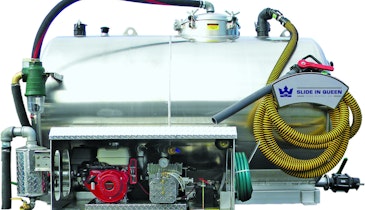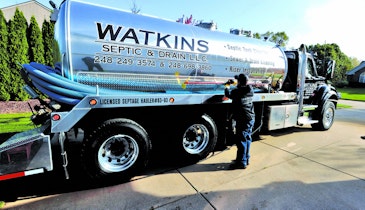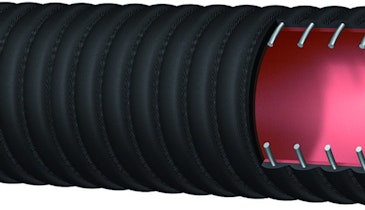Every pumper has their favorite tools and techniques for certain kinds of jobs. One of the most challenging of those jobs is the tank that’s been so neglected it has a veritable drumhead on it, the scum is so thick and solid. That’s when you have to decide whether to backflush or to agitate. Here’s what some of your colleagues tell us about their chosen method:
Tim Frank relies on backflushing for the majority of small- and medium-sized tanks.
“We don’t use agitators for those,” he says. “Our trucks are pretty big with powerful pumps on them, so they can get the stuff out of there. But you always have that crust that floats. What we do to get that is change the vacuum to the other side, to make pressure in the truck. Then we’ll open the valve and start to ‘boil’ it in there hard, bring it around and mix it up.
“We’ll generally pump the tank down pretty low, so as you boil the liquid against the bottom, it rolls and turns and will mix all that sludge and grease and slime up. It liquefies it.”
Large tanks are a different story, Frank explains. “We don’t want to spend all that time, so we do have a mechanical agitator that we’ll use mainly on some of the really big tanks, the 5,000- or 10,000-gallon ones that are pretty heavy in the bottom. We’ve got an extension that lets us hold (the agitator) down to the bottom of the tank. When you do that, it pushes it against the bottom of the tank, and agitates it up, just like being beneath a dam.
“Then the solids just roll up and you can get it right up the hose. The bottom is where you really want to get, because there you find sand from washing clothes, and that’s not doing you any good, so that’s what you want to get out of there. You want to maybe leave a little bit for culture, so you wouldn’t wash the sides with bleach or anything, but you really want to empty that bottom out.”
Steve Lojovich pumps residential systems that are located steeply downhill from where he’s able to park his truck. Consequently, on jobs where he’s got a stubborn scum layer, there’s no way he’s going to get the effluent up the hose without some serious slicing and dicing. For years he fought scum with backflushing alone, but then he heard about mechanical agitators and got curious.
“I’ve used a Crust Buster since 1999,” he says. “I was very skeptical that they would really work. Then I had a day off and the company that makes them is located not far from us, so I decided to go look at one. I went down there and watched them use it on an actual job. I was sold on the spot because I could see how good it worked. I bought it.
On the worst of the scum layers — he describes them as “opening up a tank and finding one you could walk on” — Lojovich still must inject water or septage from a previous job to mix a pumpable slurry. “Whenever I think I may run across one of those,” he says, “I make sure it’s never the first job of the day.” He does this gradually — pumping in some liquid, agitating the solid layer, mixing in more liquid — until it’s of a consistency that will make it up the vertical drop. But it’s the agitator he credits for making short work of what used to be an endless procedure when backflushing was his only tool.
John Knelsen uses his own method of persuading stubborn scum layers to disengage and disintegrate. It’s a cross between backflushing and manual agitation that works well for the systems he services.
“I take a big window scraper to break up the solid layer, then run in some water with a garden hose,” he says, making a liquid mixture he can pump out. “I’ve looked at mechanical agitators, but I don’t think they’d work in my applications.”
Judy Knelsen explains that the systems they pump are mostly residential and 50 years old or newer, and regulations require a riser that restricts access for mechancal agitators.





